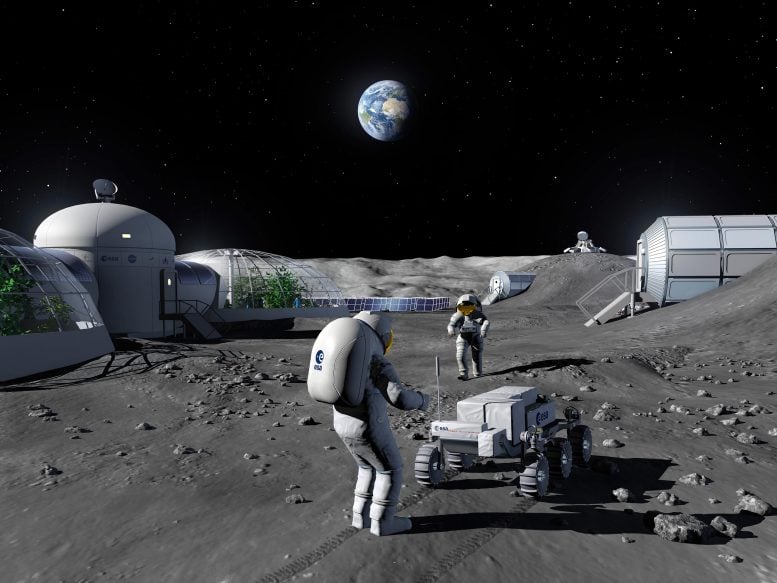
An artist’s impression of what a lunar base could look like. Scientists exploring whether lunar resources can be used to facilitate human exploration on the moon or beyond have reported that lunar soil contains active compounds that can convert carbon dioxide into oxygen and fuels. Credit: ESA – P. Carril
Soil on the moon contains active compounds that can convert carbon dioxide into oxygen and fuels, according to a new study by scientists in China that was published on May 5, 2022, in the journal Joule. They are currently investigating whether lunar resources can be used to facilitate human exploration on the moon or beyond.
Nanjing University material scientists Yingfang Yao and Zhigang Zou hope to design a system that takes advantage of lunar soil and solar radiation, the two most abundant resources on the moon. After analyzing the lunar soil brought back by China’s Chang’e 5 spacecraft, their research team found the sample contains compounds—including iron-rich and titanium-rich substances—that could work as a catalyst to make desired products such as oxygen using sunlight and carbon dioxide.
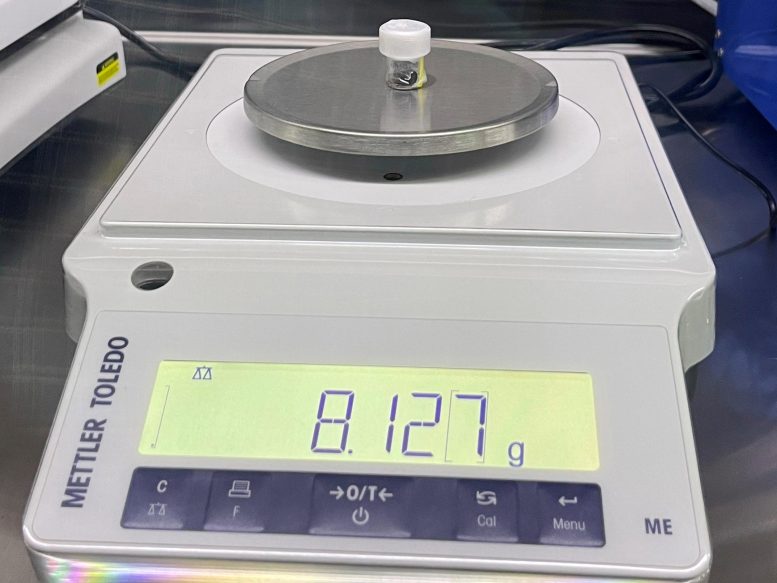
This photograph shows a lunar soil sample returned by China’s Chang’e 5 spacecraft. Credit: Yingfang Yao
Based on the observation, the team proposed an “extraterrestrial photosynthesis” strategy. Mainly, the system uses lunar soil to electrolyze water extracted from the moon and in astronauts’ breathing exhaust into oxygen and hydrogen powered by sunlight. The carbon dioxide exhaled by moon inhabitants is also collected and combined with hydrogen from water electrolysis during a hydrogenation process catalyzed by lunar soil.
The process yields hydrocarbons such as methane, which could be used as fuel. The strategy uses no external energy but sunlight to produce a variety of desirable products such as water, oxygen, and fuel that could support life on a moonbase, the researchers say. The team is looking for an opportunity to test the system in space, likely with China’s future crewed lunar missions.
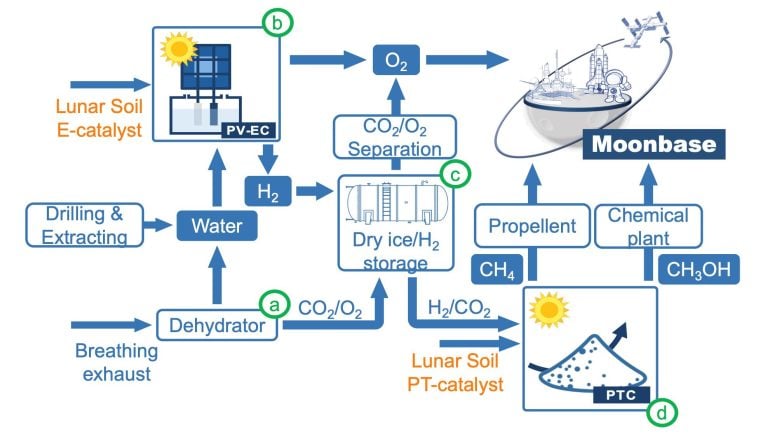
This schematic shows how lunar soil can work as a catalyst for extraterrestrial photosynthesis to make oxygen and fuels needed for long-term survival on the moon. Credit: Yingfang Yao
“We use in-situ environmental resources to minimize rocket payload, and our strategy provides a scenario for a sustainable and affordable extraterrestrial living environment,” Yao says.
While the catalytic efficiency of lunar soil is less than catalysts available on Earth, Yao says the team is testing different approaches to improve the design, such as melting the lunar soil into a nanostructured high-entropy material, which is a better catalyst.
This video shows photovoltaic-driven water electrolysis catalyzed by lunar soil. Credit: Yingfang Yao
Previously, scientists have proposed many strategies for extraterrestrial survival. But most designs require energy sources from Earth. For example, NASA’s Perseverance Mars rover brought an instrument that can use carbon dioxide in the planet’s atmosphere to make oxygen, but it’s powered by a nuclear battery onboard.
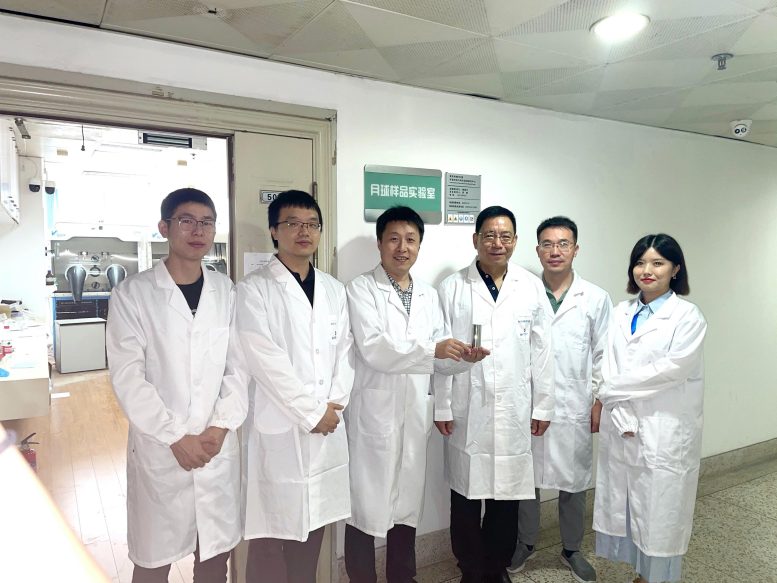
This photograph shows the research team at Nanjing University holding the lunar soil sample. Credit: Yingfang Yao
“In the near future, we will see the crewed spaceflight industry developing rapidly,” says Yao. “Just like the ‘Age of Sail’ in the 1600s when hundreds of ships head to the sea, we will enter an ‘Age of Space.’ But if we want to carry out large-scale exploration of the extraterrestrial world, we will need to think of ways to reduce payload, meaning relying on as little supplies from Earth as possible and using extraterrestrial resources instead.”
Reference: “Extraterrestrial photosynthesis by Chang’E-5 lunar soil” by Yingfang Yao, Lu Wang, Xi Zhu, Wenguang Tu, Yong Zhou, Rulin Liu, Junchuan Sun, Bo Tao, Cheng Wang, Xiwen Yu, Linfeng Gao, Yuan Cao, Bing Wang, Zhaosheng Li, Wei Yao, Yujie Xiong, Mengfei Yang, Weihua Wang and Zhigang Zou, 5 May 2022, Joule.
DOI: 10.1016/j.joule.2022.04.011
This work was supported by the National Key Research and Development Program of China, the Major Research Plan of the National Natural Science Foundation of China, the National Natural Science Foundation of China, the Fundamental Research Funds for the Central Universities, the Program for Guangdong Introducing Innovative and Entrepreneurial Teams, the Natural Science Foundation of Jiangsu Province. the open fund of Wuhan National Laboratory for Optoelectronics, the Hefei National Laboratory for Physical Sciences at the Microscale, the Civil Aerospace Technology Research Project: Extraterrestrial In-situ water Extraction and Photochemical Synthesis of Hydrogen and Oxygen, and Foshan Xianhu Laboratory of the Advanced Energy Science and Technology Guangdong Laboratory.

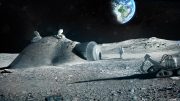
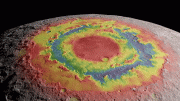



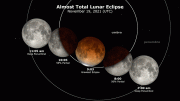

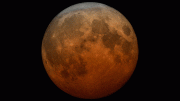
What the hek are you talking about. This is old news. Been there done that. Except it hasn’t. No one has been to the moon to prove this, so try again in 5 years.
… I guess that even bricks can be made of the moon dust…
Perhaps this will be the “gold rush” of the 21st century ?
Trying to generate O2 from Moon soil/rocks/ice is extremely bad/impractical idea IMHO!
Or keep carrying tons of water to Moon to produce O2!
Right solution is recycling air by converting CO2 in the air back to O2 (& Carbon powder to dump) by using only electricity!
& such tech already exists as NASA tested on Mars (MOXIE device)!
Tech for recycling water already exists & used by NASA!
So NASA just needs to develop MOXIE tech to be used in space/Moon stations!